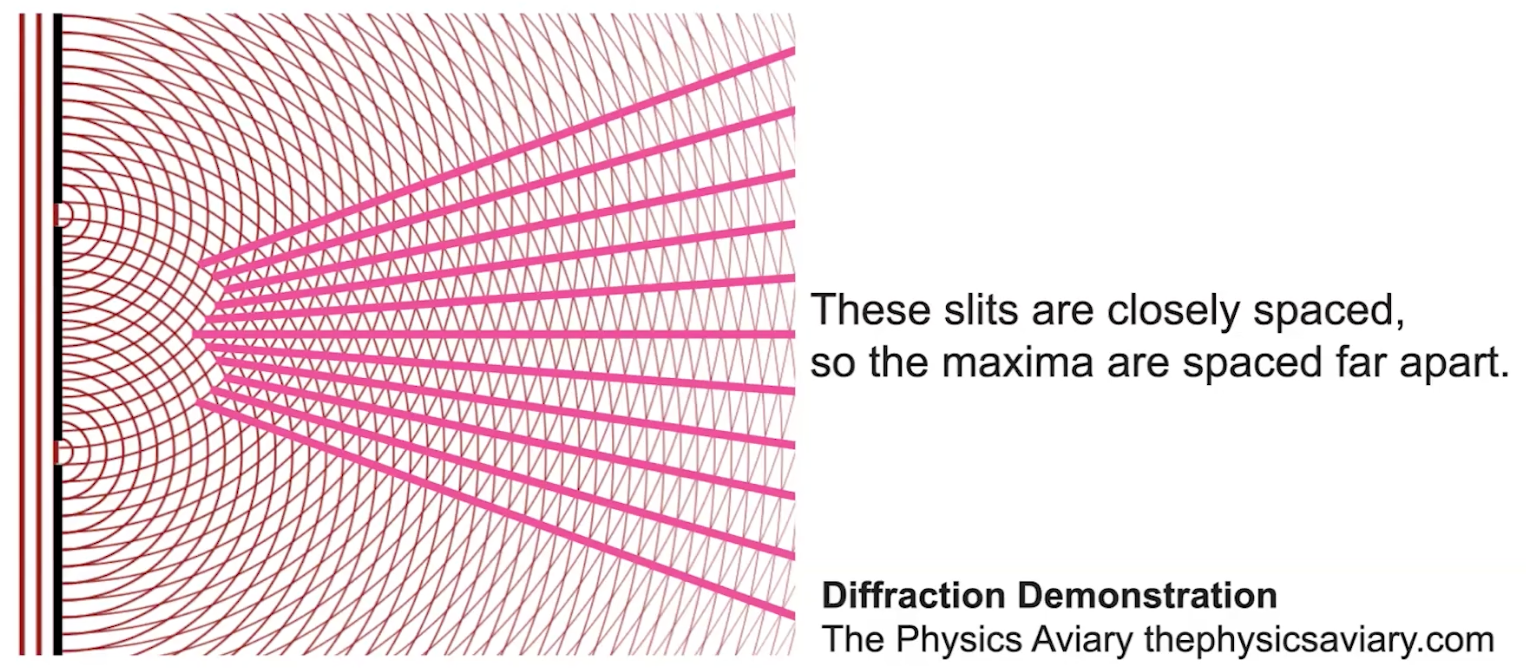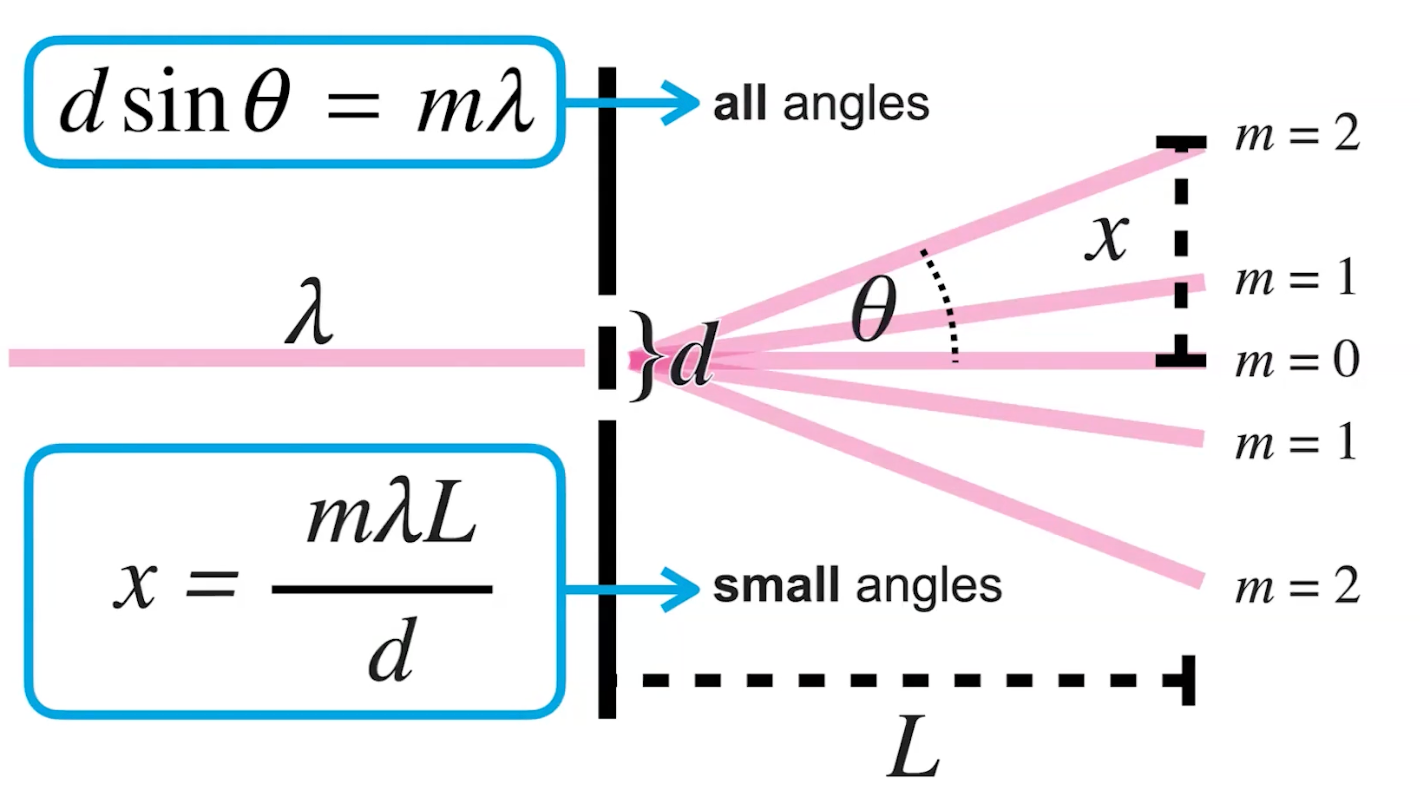As we learned in 14.7 — Diffraction, diffraction occurs when waves spread around the edges of an obstacle or through an opening, and then interferences with itself. it occurs for both sound waves and light waves. When a wave diffracts, the obstacle essentially acts as a new source of waves.
 |  |
|---|---|
Here are some quick facts about sound waves and all electromagnetic waves:
| Sound Waves | EM Waves |
|---|---|
| Longitudinal | Transverse |
| 340m/s in air | 300,000,000m/s in air |
| Can’t be polarized | Can be polarized |
| Interference effects | Interference effects |
| In double-slit interference, |
- a greater wavelength will result in widely-spaced maxima
- a greater distance to the screen will result in widely-spaced maxima
- a greater spacing between openings will result in closely-spaced maxima
Continuing on the diagram in 14.7 — Diffraction, we have the following illustration and the derived formula:

We can manipulate the small angle equation to fit into by assuming is the x-value. When we’re looking at the first dark spot (), the x-axis will simply represent which is the distance to the screen.